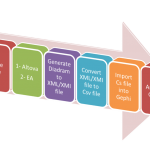Which of the following changes to the environment are caused by humans? Check all that apply
Question 1
Which of the following changes to the environment are caused by humans? Check all that apply.
| erosion due to acid rain | ||
| depletion of the ozone layer | ||
| increased acid rain | ||
| exotic species | ||
| hurricanes | ||
| global warming |
Download The Solution Here
$50.00Add to cart
Question 2
What is an example of an abiotic component of an environment?
| insects | ||
| plants | ||
| bacteria | ||
| soil | ||
| all of the above | ||
| none of the above |
Question 3
What are large areas of land with similar climate, fauna and flora?
| biome | ||
| community | ||
| population | ||
| biosphere |
Question 4
What poses the greatest threat(s) to biodiversity?
| habitat loss | ||
| overharvesting | ||
| exotic species | ||
| all of the above |
Question 5
Organize the levels of the ecological hierarchy from small to largest.
– 1. 2. 3. 4. 5.
community
3
– 1. 2. 3. 4. 5.
biosphere
5
– 1. 2. 3. 4. 5.
organismal
1 – 1. 2. 3. 4. 5.
ecosytem
4
– 1. 2. 3. 4. 5.
population
2
Question 6
Scientists have discovered and named about 1.5 million eukaryotic species.
True
False
Question 7
Herbivory is an example of predation.
True
False
Question 8
The extinction of all organisms are tracked and recorded by humans.
True
False
Question 9
Heterotrophs produce their own food.
True
False
Question 10
Can species compete with different species in a community?
Yes
No
Question 11
Individuals can evolve over time.
True
False
Question 12
Does evolution explain the origin of life?
Yes
No
Question 13
Evolution is premeditated.
True
False
Question 14
Can bacteria evolve to be resistant to antibiotics?
Yes
No
Question 15
Match the evidence of evolution with the correct description.
|
|
Question 16
What is survival of the fittest?
| microevolution | ||
| genetic variation | ||
| speciation | ||
| natural selection |
Question 17
Match the descriptions with the correct terrestrial biomes.
|
|
Question 18
How is genetic diversity introduced into a population? Check all that apply.
| evolution | ||
| adaptations | ||
| sexual reproduction | ||
| DNA mutations |
Question 19
What is the rarest type of ecosystem?
| biomes | ||
| ocean | ||
| freshwater | ||
| terrestrial |
Question 20
What is often the limiting nutrient in aquatic ecosystems?
| nitrogen | ||
| s | carbon | |
| water | ||
| phosphorus |
Question 21
How does sulfur enter the atmosphere?
| geothermal vents | ||
| carbon dioxide | ||
| ocean sedimentation | ||
| saltwater |





